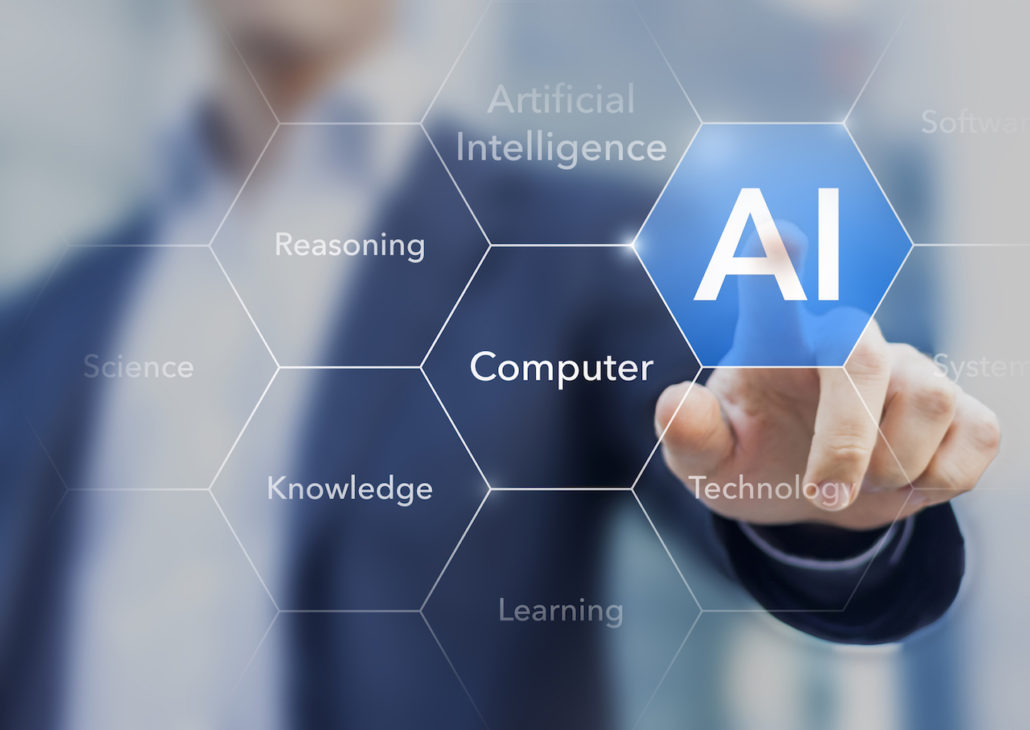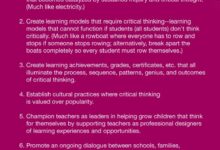
Is AI the Next CRM Battleground?
Artificial intelligence is helping sales and marketing professionals do a better job of getting the right messages to the right prospects.Artificial Intelligence (AI) is getting a lot of attention of late. Salesforce unleashed a torrent of hype about Einstein, Microsoft is countering with AI features built into Dynamics 365, and of course IBM continues to hit prime time with Watson ads featuring the likes of Bob Dylan and Stephen Hawking. EnterpriseAppsToday.com recently delved into this area in Where is AI Headed in the Enterprise. In this article, let’s take a look at what is going on with regards to AI in customer relationship management (CRM).
“For the first time ever, AI is moving into the mainstream thanks to the convergence of increasing compute power, the massive amounts of data and the advances in machine learning,” said Allison Witherspoon, director, product marketing, Salesforce Einstein. “Everyone is already being impacted by AI daily, without even realizing it.”
She offered examples such as Apple’s Siri leveraging natural language processing to recognize voice commands, Facebook’s deep learning facial recognition algorithm that identifies a person with nearly 98 percent accuracy and sites such as Spotify that use machine learning to understand how each catalog item relates to one another and customer preferences. That said, AI is still at the very early stages when it comes to being part of business processes such as CRM.
CRM meets AI
Salesforce got the AI ball rolling when it purchased RelateIQ a couple of years back. It then released SalesforceIQ that automatically captures, analyzes and surfaces information from email, calendars and more, particularly for business development and sales. It creates a unified address book for a sales team, tracks activity by process or pipeline, and generates real-time relationship insight tailored to workflows.
“There is huge demand for AI-powered systems that deliver greater intelligence as companies look to transform for the digital age,” said Witherspoon.
Things were just stepped up a notch with the release of Salesforce Einstein, which has embedded AI capabilities, such as machine learning, deep learning and natural language processing. There are already 17 generally available Einstein features across five of the Salesforce Clouds, with new Einstein features being developed for every Salesforce Cloud. Enterprises can look for these to come out either in the Winter ‘17 release, or the following next year. The company has hundreds of developers and data scientists assigned to this area, which it regards as being of high strategic importance.
Witherspoon said machine learning algorithms can analyze billions of transactions and variables to determine which customers are most likely to purchase a particular product. This opens the door to greater levels of automation, personalization of experiences and improved decision making for sales, customer support and marketing.
Sales reps, for example, can use Predictive Lead Scoring to focus on closing the best leads and Opportunity Insights to understand when a deal is trending up or down so they can follow up appropriately. With Automated Activity Capture, email and calendar activity is automatically logged with the right Salesforce record, and analyzed to deliver predictions. In addition to those AI features, Salesforce also has Recommended Case Classification for call center teams to enable predictive routing of cases to the right agent, Recommended Responses so agents get the best responses to questions, and Predictive Close Times to predict the time needed to resolve an issue. Alternatively, marketers can use Predictive Scoring to understand every customer’s likelihood to engage with an email, Predictive Audiences to build custom audience segments, and Automated Send-time Optimization to predict the optimal time to deliver messages.
The Competition Responds
Gartner notes that Salesforce leads the CRM marketplace with a 20 percent stake, followed by SAP at 10 percent, Oracle at 8 percent and Microsoft at 4 percent. Salesforce hopes to extend its lead via Einstein. But don’t expect it to have things its own way easily.
IBM just unveiled new Watson-themed tools for marketing, CRM and customer analytics. Details of past purchases, customer behavior, delivery preferences and more are brought to the fore in IBM’s new cognitive solutions for marketers. The goal is to provide CRM with the ability to identify correct audiences to create a winning combination of campaign elements.
Other tools include IBM Watson Customer Experience Analytics, which taps into shopping patterns and buying trends to create models for customer segmentation. The IBM Watson Content Hub mines the data buried in a company’s content management system and automatically tags content including images, videos and documents. This is helpful as it avoids the prospect of marketers floundering for the right data inside a vast content repository.
“IBM is bringing Watson cognitive capabilities to millions of professionals around the world, putting a trusted advisor and personal analyst at their fingertips,” said Harriet Green, general manager Watson IoT, cognitive engagement and education.
Microsoft, too, is getting in on the act. A new release of Microsoft Dynamics 365 is being stuffed full of cloud-based AI features that integrate with ERP, CRM, supply chain and other applications. The company’s recent acquisition of LinkedIn plays a big part in this. Analytics engines can harness CRM, ERP, LinkedIn and Microsoft document data to offer up sales leads and marketing insight.
Intelligent Partner Apps
The vast Microsoft partner network also comes into play. Versium, for example, has integrated its automated predictive targeting application into Microsoft Dynamics 365. This allows Dynamics users to leverage AI to prioritize leads and create high-value audiences for improved marketing campaign performance.
“The new wave of AI use cases is applying predictive modeling to the existing customer base to extract more value, aka cross-sell and upsell, and modeling to help identify the most loyal customers,” said Chris Matty, CEO and co-founder, Versium. “This is important because it’s widely accepted that a significant percent of a company’s revenue and value often comes from the top 20 percent of customers. The same principles of predictive modeling are being applied to retention to predict who is most likely to cancel or not renew a service.”
Take the concept of adopting new technology. Some people are very conservative, and some are risk takers. But how do you tell? The hope is that AI will be able to model the individual characteristics of decision-makers within a company based on their consumer attributes. For example, if a decision-maker is into rock climbing, that tends to indicate risk-taker attributes and feeds into their likelihood to take a chance on new technology.
For contact centers, AI changes service from a B2C interaction to a B2M2C (business to machine to consumer) interaction. In other words, you can now expect many more interactions to filter through an ecosystem of smart and connected devices that may actually participate in the resolution.
For example, machine learning can adaptively learn how to solve similar problems and patterns over time. You also see this with bots that are infiltrating messaging apps like Slack, and soon we will see this take a place in contact centers as well. That said, humans continue to provide a crucial component.
Advisory versus Autonomy
Carl Landers, senior vice president, CMO, Conversica, thinks of AI in sales and marketing as acting in two main ways: advisory and autonomously. In the advisory role, AI is used to advise the salesperson or marketer on what to do next. For example, which account to call, which ad to run, which opportunity to advance next or which email to send. In the autonomous role, however, AI is offloading work from the salesperson or marketer completely.
This distinction is crucial for the success of AI. An application that turns salespeople into complete robots may quickly become unpopular. But they will welcome apps that save them time and help them zero in on the bullseye. An example of autonomous AI that falls into the latter category might be an intelligent assistant that engages and qualifies sales leads. When a “hot” one is identified, it sends it right to the salesperson for follow-up. Examples include SalesforceIQ, Aviso and Crystal.
Advisory AI, on the other hand, offers such features as predicting which leads to follow-up with first, as they’re most likely to become customers, or scanning recent activities on an opportunity and suggesting to the salesperson that it’s time to reach out.“Autonomous AI is making its own decisions about what the conversation is about and what next steps to take as a result, just like a human would,” said Landers. “Having the AI do the hard task of lead engagement and follow-up frees up the sales team to work on more valuable activities, like proposing, negotiating and closing, which no AI is capable of doing today.”
Where AI is likely to excel in CRM is in those areas where sales and contact center people are likely to drop the ball. For example, if a customer is rude on the phone and hangs up, it’s possible that in the heat of the moment, the agent won’t record the details accurately. Thus a customer can fall through the cracks. AI will be able to automatically engage and communicate with every customer to ensure no one is forgotten. It will be able to predict when a customer is having a less-than-ideal experience and ensure proper follow-up and remedial action.
Further use cases include understanding external triggers that could impact a experience (like a change in management) and prompt the right level of outreach, and suggesting the most opportune times and methods to communicate with customers to match their styles and expectations.
Chatbots are already in existence, though results can sometimes be hit or miss. Some are used in CRM to engage customers, provide responses to their queries and distribute content of interest. When the person is adjudged to be a hot prospect, he or she is turned over to the sales team.
But AI promises to take this technology to another level. [24]7’s chatbot deployments, for example, aim to empower agents to navigate and access information more quickly as well as accelerate learning cycles to helping improve sales teams’ productivity and effectiveness.
“We will likely see more intelligent chatbots that can help service customers or support employees/agents (from answering questions to resolving issues and conducting transactions),” said Daniel Hong, senior director, product marketing at [24]7. “AI can allow us to anticipate/predict what the customer wants/needs and personalize that interaction.” In the area of spoken and text communications, [24]7 uses a unified natural language model combined with AI, across interactive voice response (IVR), mobile apps and virtual agents. This enables companies to engage customers in conversations that are contextually aware and consistent across touch points. It seeks to fuse omni-channel customer journey data (activity from prior interactions across different channels and devices) with data from enterprise systems of record (CRM, billing and profile) to identify the customer’s intent in real-time and provide the best treatment at that point in the journey, on that device and in that environment. Hong said the [24]7 platform processes and analyzes hundreds of billions of events each month in real-time and offline. Human-assisted (supervised and semi-supervised) machine learning is applied to optimize predictive models.
Scratching the Surface
As promising as these applications are, there is far more to come. Whether the applications will be annoying — a la Tom Cruise in Minority Report being inundated with special offers as he passes billboards in a mall — or useful — as in cold callers never contacting you unless you were a realistic prospect for a service — only time will tell.
“We’re at the very early stages of this revolution and AI is just starting to show its potential in the business world,” said Mayur Anadkat, vice president of product marketing, Five9.
Drew Robb is a freelance writer specializing in technology and engineering. Currently living in Florida, he is originally from Scotland, where he received a degree in geology and geography from the University of Strathclyde. He is the author of Server Disk Management in a Windows Environment (CRC Press).







